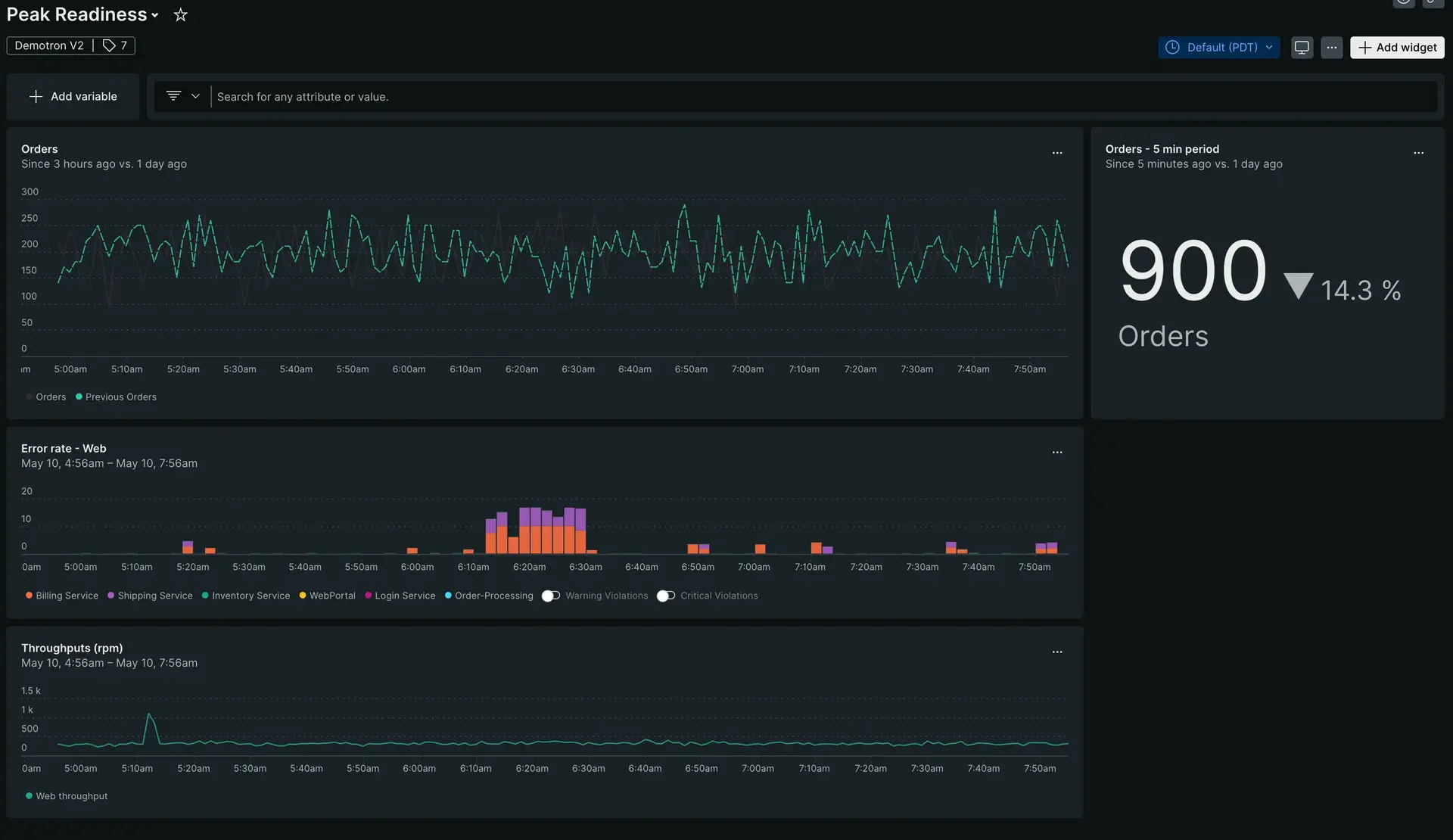Capacity planning is when you assess your system over a period of several months. You'll determine how well your system performs on an ordinary day, then test how far your system can be pushed before an outage occurs. Ideally, exposing your system's weaknesses leads to a cost-effective strategy that prepares your team and maintains a functionally great system. At the start of preparation, you'll ask yourself: are all teams aligned around the same data? Do they know how to communicate?
The goal of gameday preparation isn't perfection. Rather, peak preparedness is about team alignment, communication, and prioritizing the parts of your architecture that map onto customer experience.

You can use New Relic to prepare for your gameday event by tracking your app performance over time.
Objectives
This tutorial series introduces some basic tools that get you started with peak performance planning. Though not exhaustive, the following docs walk you through our recommendations for the planning stage of a peak demand event.
- If you're handling incident response on gameday, you'll create service levels on business-critical capabilities.
- You'll evaluate your alerts and reduce redundancy and noise, and create new on your service levels.
- You'll set up workloads that align everyone on gameday.
- If you're looking to scale your infrastructure, you'll install an integration that reports New Relic data to your Kubernetes cluster so it autoscales when demand peaks.
Before you begin
In order to start preparing for a peak demand event, you need to start ingesting data about your architecture. Peak performance planning is all about evaluating your system's performance over time. To get started:
- Install the infrastructure agent with our guided install. By installing the infrastructure agent, you'll get out of the box data about CPU, memory, and disk utilization.
- Install the APM agent with our guided install. The APM agent collects data about throughput, response time, and any errors.
These are two separate guided install processes that report two different sets of data. Taken together, they give you a foundation assess your needs for gameday.
What's next?
Congratulations! You've instrumented with a couple New Relic agents and have data flowing in. Now that you have data flowing in, it's time to surface data about your services, hosts, and apps that'll set up you and your team for success. The data exposed with New Relic can shape your capacity planning process and guide you to understanding your system architecture with more intimacy than you had before. Follow the rest of the tutorial series below to set up service levels, evaluate your alerts, create workloads, and autoscale your infrastructure.